
Glendive is a city in and the county seat of Dawson County, Montana, United States, and home to Dawson Community College. Glendive was established by the Northern Pacific Railway when they built the transcontinental railroad across the northern tier of the western United States from Minnesota to the Pacific Coast. The town was the headquarters for the Yellowstone Division that encompassed 875 route miles (1,408 km); 546 (879) in main line and 328 (528) in branches with the main routes from Mandan, North Dakota, to Billings, Montana, and from Billings to Livingston. The town of Glendive is an agricultural and ranching hub of eastern Montana sited between the Yellowstone River and the Badlands. Makoshika State Park is located just east of Glendive.
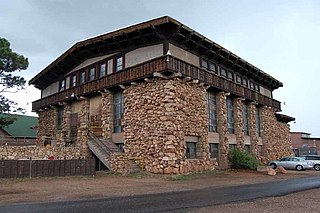
Grand Canyon Power House is a former electric power plant that served National Park Service and concessioner facilities at the South Rim of the Grand Canyon in Grand Canyon National Park. It is significant for its architecture, which masks the building's industrial function behind a veneer of rustic design. It has been designated a National Historic Landmark on the basis of its design quality and the level of preservation of its equipment.

The Stevenson Dam Hydroelectric Plant is a hydroelectric power plant located on the Housatonic River at the boundary between the towns of Monroe and Oxford, Connecticut. The Connecticut Light and Power Company began construction in 1917 and FirstLight Power has since gained ownership. It was listed on the National Register of Historic Places in 2000 and is considered to have high hazard potential by the National Inventory of Dams. The site includes three contributing structures: the Stevenson Dam, the Stevenson Dam Bridge, and the Stevenson Powerhouse.
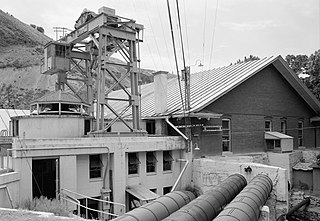
The Olmsted Power Station is a historic building located in Orem, Utah, United States. It is listed on the National Register of Historic Places. The hydropower plant was dedicated on April 12, 1904 and decommissioned on September 21, 2015. The plant will become a museum after a seismic refit of the building.

Colver Historic District is a national historic district located at Barr Township and Cambria Township in Cambria County, Pennsylvania. The district includes 336 contributing buildings, 5 contributing sites, and 3 contributing structures. The district consists of residential areas, coal mining resources, Cambria and Indiana Railroad shop buildings, and a dairy farm associated with the Ebensburg Coal Company's mine and developed between 1911 and 1943. Notable buildings include a variety of brick and frame workers' housing, the Ebensburg Coal Company office building (1914), stone company store (1912), Colver Amusement Company (1912), Colver Hotel (1912), Colver Presbyterian Church (1915), public school (1927), hospital (1914), Roundhouse No. 1 (1918), Roundhouse No. 2 (1920), and main power building (1911).
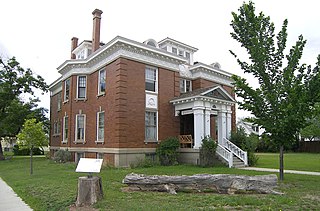
The Charles Krug House, also known as the Krug House, is a residence at 103 N. Douglas Street, Glendive, Montana, US, designed by St. Louis, Missouri-based architect Herbert C. Chivers (1869-1946). It was listed on the National Register of Historic Places in 1976.

The Wiregrass Museum of Art is an art museum in Dothan, Alabama. The museum was founded in 1988 and is located in the city's former power and water plant. The building was listed on the Alabama Register of Landmarks and Heritage in 1990 and the National Register of Historic Places in 1991.

Brynjulf Rivenes, generally known as B. Rivenes, was a Norwegian-American architect practicing in Miles City, a city in sparsely settled eastern Montana.
The McCone Residence in Glendive in Dawson County, Montana was listed on the National Register of Historic Places in 1988.

The U.S. Post Office in Glendive in Dawson County, Montana was built in 1935 with elements of Colonial Revival style. It was listed on the National Register of Historic Places in 1988, as part of a study of multiple historic resources in Glendive which also listed several others.
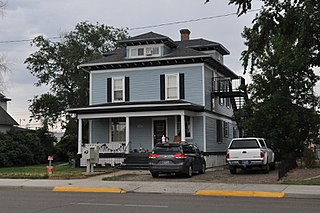
The Blackstock Residence at 217 W. Towne in Glendive, Montana is a historic house that was built sometime between 1905 and 1910. It was listed on the National Register of Historic Places in 1988.

The First Methodist Episcopal Church and Parsonage, now the United Methodist Church in Glendive, Montana, was listed on the National Register of Historic Places in 1988. The church building was built in 1909; the parsonage in 1913. They are located at 209 N. Kendrick. The parsonage is a Bungalow/Craftsman architecture house. The church is Late Gothic Revival, or English Gothic architecture in style, designed by Miles City-based architect Brynjulf Rivenes.
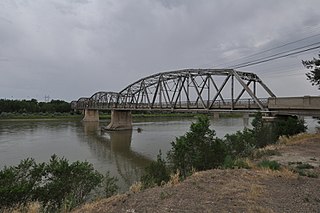
Completed in 1926 at a cost of $305,000, the Bell Street Bridge crosses the Yellowstone River in Glendive, Montana. Designed by the Montana Highway Commission and built by contractor Boomer, McGuire & Blakesley, the 1,352 feet (412 m) long, 20 feet (6.1 m) wide bridge consists of six Warren through truss spans, each roughly 219 feet (67 m) long, and a concrete approach span about 38 feet (12 m) long. It was listed on the National Register of Historic Places in 1988. At one time the main highway bridge over the river, Montana DOT rehabilitated and converted it for pedestrian use in 1992 when the bridge on the I-94 Business Loop was built 300’ to the north.

The Glendive City Water Filtration Plant, in Glendive, Montana, was built in 1917 after years of delays, after the city was founded in 1902. Water was delivered in barrels to residences in Glendive until it was completed. It was listed on the National Register of Historic Places in 1988.

The Merrill Avenue Historic District in Glendive, Montana is a historic district which was listed on the National Register of Historic Places in 1988. The district includes 28 contributing buildings and a contributing site on 2.5 acres (1.0 ha). It includes Classical Revival, Late Gothic Revival, and Italianate architecture.

The Sacred Heart Church at 316 W. Benham in Glendive, Montana is a Catholic church which was built during 1924–26. It was listed on the National Register of Historic Places in 1988.
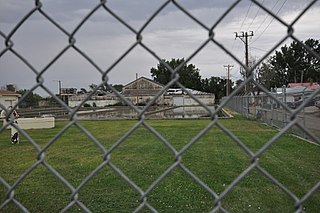
The Northern Pacific Railroad Settling Tanks in Glendive, Montana were built in 1905 by the Northern Pacific Railroad. The site was listed on the National Register of Historic Places in 1988. The listing included two contributing buildings and two contributing structures. It includes a caretaker's cottage built in about 1910. The site has also been known as Glendive City Shops, as they have been repurposed as city maintenance facilities.
Trafford power station supplied electricity to the Trafford and Stretford areas of Greater Manchester, and to the national grid, from 1929 to 1976. The generating station was built by the Stretford and District Electricity Board which it operated until the nationalisation of the British electricity supply industry in 1948. The 60 megawatt coal-fired station was supplemented in 1952 with an experimental 15 megawatt gas turbine generating set.

Glendive Depot is an office building and former train station in Glendive, Montana. The Northern Pacific Railway established the town in 1881 and opened the first depot in 1882. The present depot building was built in 1922 and is part of the Merrill Avenue Historic District.
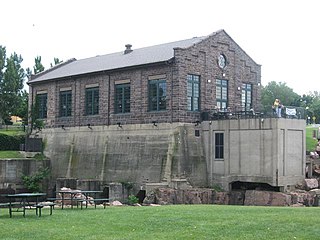
The Sioux Falls Light and Power Hydro Electric Plant, formerly the Northern States Power Building, is a historic building in Falls Park in Sioux Falls, South Dakota. Originally built as a hydroelectric power plant on the Big Sioux River, it now houses the Falls Overlook Cafe. It was listed on the National Register of Historic Places in 1993.




















